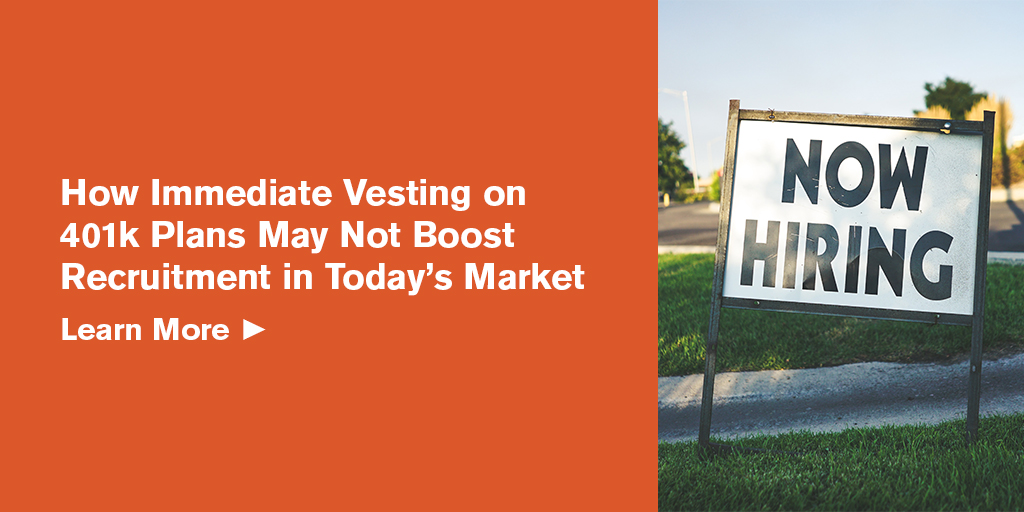Survey data from the Plan Sponsor Council of America (PSCA) indicates that roughly 40% of 401(k) plan sponsors provide immediate vesting on their matching contributions. In theory, employers that offer immediate vesting on matching 401(k) contributions might have a leg up on other companies when recruiting workers in a tight labor market. The jury’s out, however.
Forfeitures and Vesting Schedules
One common rationale for using a vesting schedule is that, when plan participants leave the company prior to vesting (or fully vesting), the net savings from the forfeited matching contributions can subsidize plan costs. This benefits remaining plan participants.
Some employers use vesting schedules hoping that the prospect of forfeiting unvested matching contributions will discourage job-hopping. But other employers find that younger employees tend to change jobs often and aren’t terribly focused on retirement savings anyway, so they won’t give much weight to a prospective employer’s 401(k) vesting schedule (or lack of one) when considering accepting a job offer.
But what about employers with recruiting strategies involving workers of all age brackets? A significant proportion of targeted recruits may look favorably on immediate vesting. Seasoned labor force participants might be drawn to a company whose compensation philosophy prioritizes facilitating employee retirement savings.
A Look at the Stats
In January 2019, MetLife shifted from using a graded vesting schedule to immediate vesting. MetLife sees this move as an investment in its people. It believes immediate vesting will help lure employees who aren’t new to the workforce, and perhaps have already become fully vested in the plans where they’re presently employed.
Greenheck Fan Corporation made a similar move in hopes of giving itself a competitive advantage in recruiting production workers. The company’s 401(k) plan was ranked above paid time off as the “most popular benefit” in a PayScale.com employee survey. The immediate vesting feature is prominently noted on the Careers page of Greenheck’s website.
Still, the percentage of sponsors with immediate vesting of matching contributions has remained essentially level over the past ten years, PSCA data indicates. Why? Perhaps because the pros and cons of immediate vesting haven’t changed much over the years, and how they’re weighted depends on each employer’s compensation philosophy, profitability and competitive position in labor markets.
Time for a Change?
Many plans have adopted safe harbor provisions which automatically result in immediate vesting. So candidates you’re trying to recruit may have already experienced immediate vesting in their former employer’s safe harbor plan. The bottom line: Plan sponsors should weigh how requiring a vesting period for matching contributions (and what kind of vesting schedule) impacts their recruiting and retention strategies. Also remember that vesting schedules for matching contributions are strictly optional.
 Survey data from the Plan Sponsor Council of America (PSCA) indicates that roughly 40% of 401(k) plan sponsors provide immediate vesting on their matching contributions. In theory, employers that offer immediate vesting on matching 401(k) contributions might have a leg up on other companies when recruiting workers in a tight labor market. The jury’s out, however.
Survey data from the Plan Sponsor Council of America (PSCA) indicates that roughly 40% of 401(k) plan sponsors provide immediate vesting on their matching contributions. In theory, employers that offer immediate vesting on matching 401(k) contributions might have a leg up on other companies when recruiting workers in a tight labor market. The jury’s out, however.

